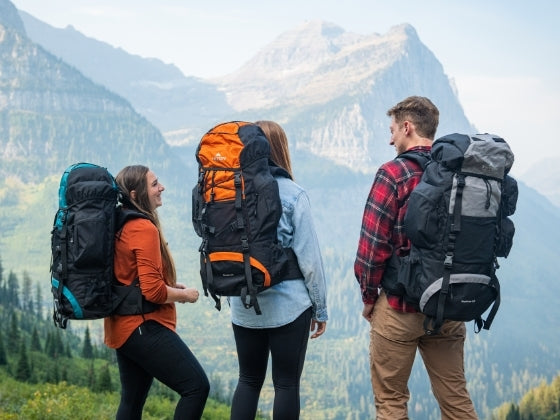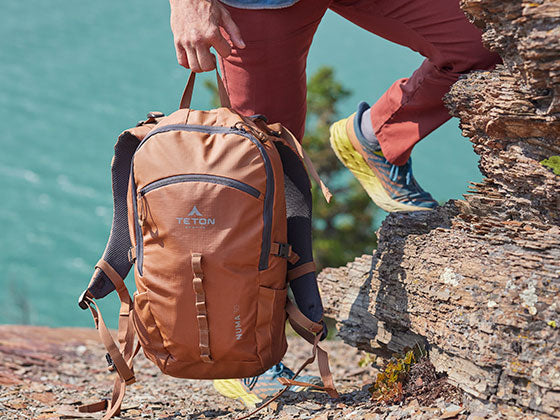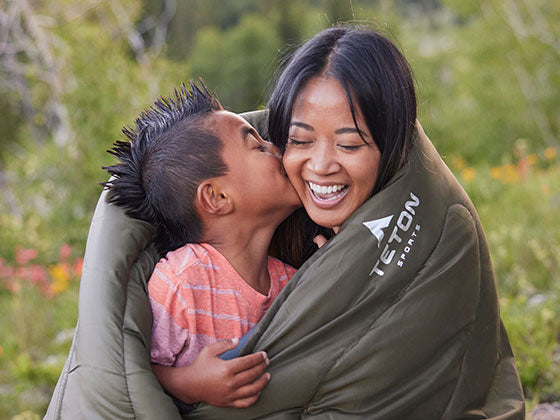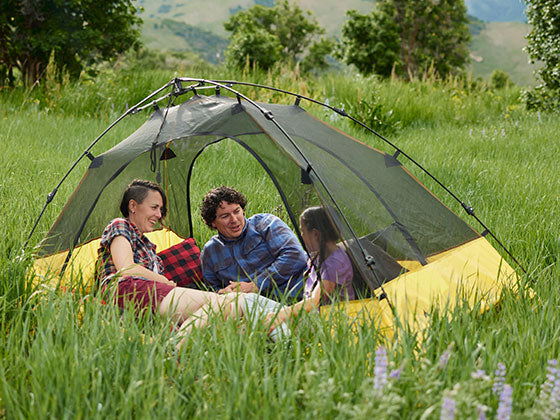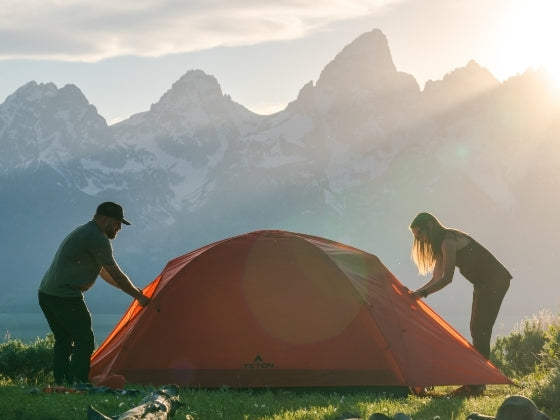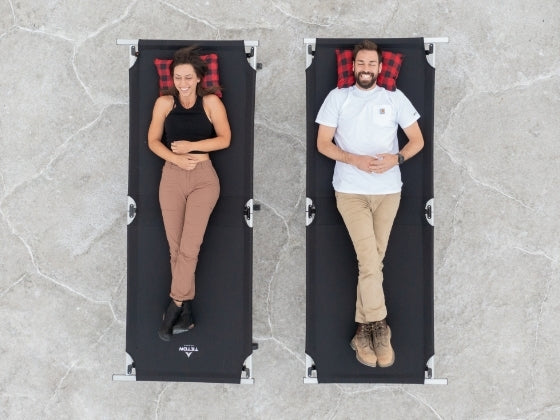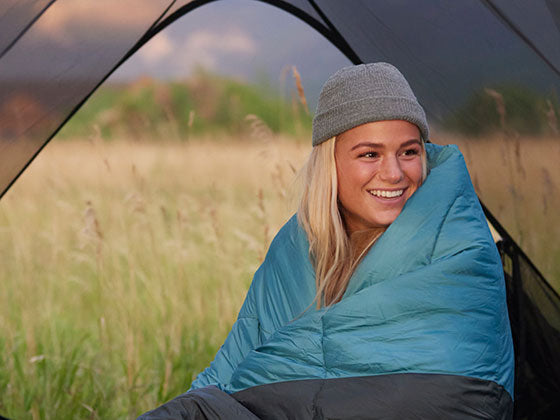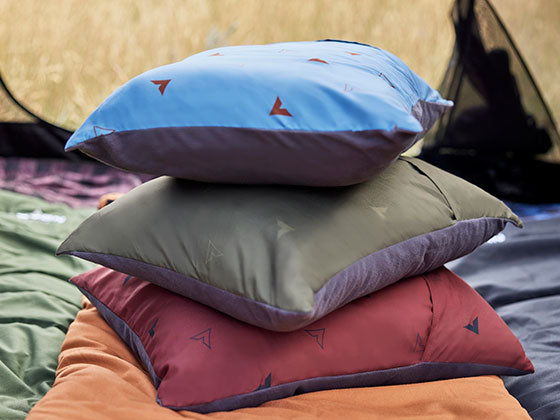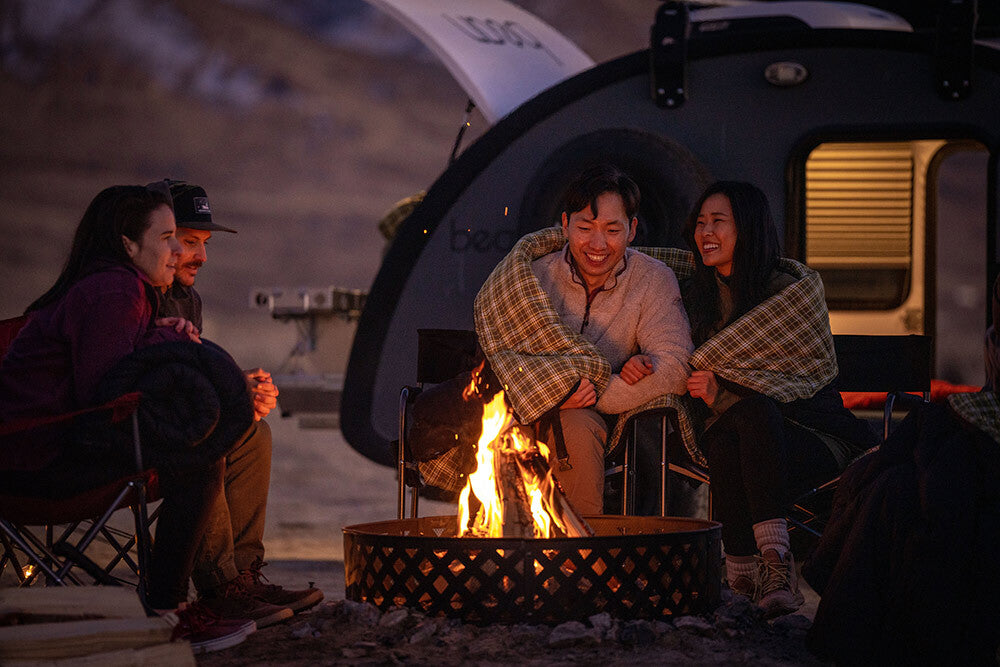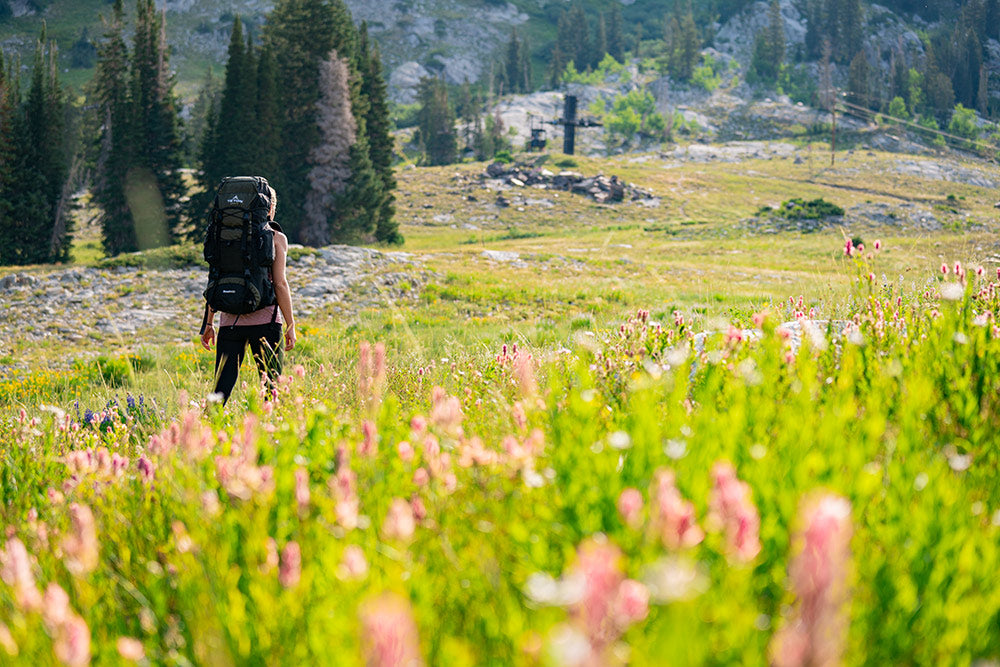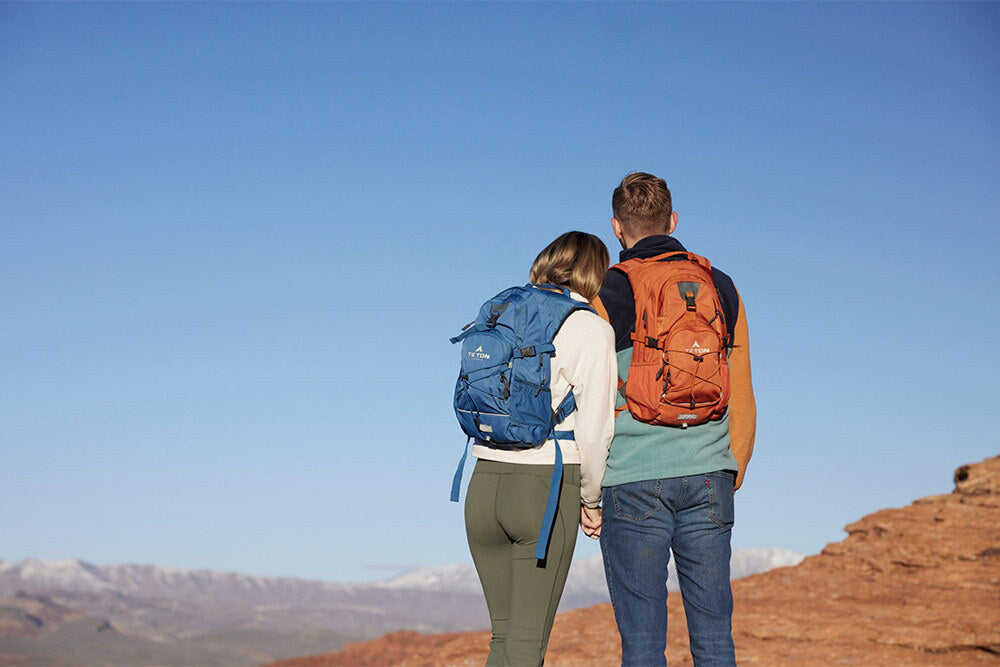Camping in your car or a tent doesn’t have to mean sacrificing mouth-watering meals, especially when using your campfire as the main cooking method. We love these tips for helping you get great results with minimal hassles.

Prioritize Safety
When your stomach is rumbling after you’ve spent a busy day exploring the outdoors, it can be tempting to get your campfire going as soon as possible. However, taking some simple precautions first keeps you, everyone around you, and the environment, safe.
First, make sure your camping area has no active fire ban. It’s becoming increasingly common for officials to temporarily prohibit campfires, particularly in drier-than-average periods.
Next, keep a container of water easily accessible at all times. A fire can get out of control in seconds, so the water makes you ready to act fast if things go wrong.
Once you get your fire going, never leave it unattended. Always extinguish it before going to bed or packing up to leave.
Finally, keep an eye on the weather. Windy conditions can make campfire cooking dangerous because a breeze can carry embers and sparks. If you decide to have a campfire when it’s breezy, keep your campfire flames low.
Learn About the Facilities Before Arriving
Many state parks have on-site grills that can give you much more flexibility with campfire cooking. Similarly, it’s common to see fire pits and fire rings among the campsite amenities.
It’s also useful to learn about your campsite’s firewood availability. For example, you cannot collect firewood on the premises of Florida state parks. Facility rules may also dictate that you purchase local firewood, such as from a campground shop. That’s because firewood brought to a site from elsewhere could introduce pests.

Do Meal Planning and Prep at Home
Give yourself at least a week before your camping trip to choose the kind of meals you want to cook. If you need a little inspiration, look for options made to cook over campfires to get the best results.
Then, do as much meal preparation as you can while at home. That way, you won’t need to bring so many supplies from home to use once you’ve got your campfire burning.
Campfire cooking can simultaneously be simple and satisfying. If you’re new to it, you might want to do something as straightforward as cooking skewered vegetables. Then, as you gain competence and confidence with this cooking method, you can become more ambitious.
Check the Heat Level With Your Hand
Campfire cooking can seem a bit complicated if you’re following a recipe intended for an oven. After all, there’s no dial you can set for the desired temperature, and no buzzer will ring to tell you when it’s hot enough.
However, cooking experts suggest a simple check by holding your hand 4 inches away from the coals and counting the number of seconds it takes before the heat level becomes too hot to bear. If that happens in 2-3 seconds, the campfire’s heat level is sufficient for cooking a steak. If your hand feels too hot after 5-7 seconds, the campfire is at a medium-heat level that works well for frying vegetables.

Put the Fire Out Correctly and Fully
Escaped campfires are a leading cause of wildfires. Putting out a campfire properly spans beyond dousing it with water. That’s the first step, but you also need to mix the embers and ashes with soil. Once the embers are immersed in water, stir them gently to ensure they’re fully covered.
Feel all the coals, embers and partially burned wood with your hand. If they’re still too hot to touch, it’s not safe to leave the campfire. Add more water, even once you think the campfire has sufficiently cooled. Finally, walk around your campsite to check for embers and sparks.
Go With the Flow When Cooking With a Campfire
Cooking with a campfire doesn’t always go the way you intend. You might have trouble getting the fire going or maintaining it due to weather. You could also forget an important ingredient at home. Even if these things happen, try to embrace the good things about the overall experience. Campfire cooking, and camping in general, means accepting that the unexpected might happen, and staying upbeat if it does.
Just because a campfire-cooked meal is not exactly as you planned doesn’t make it a failure. As you come across recipes that work particularly well, consider collecting them all in an online document or app so it’s easy to find your favorites. In any case, these tips will get you off to a good start and help you stay safe while getting delicious results.

